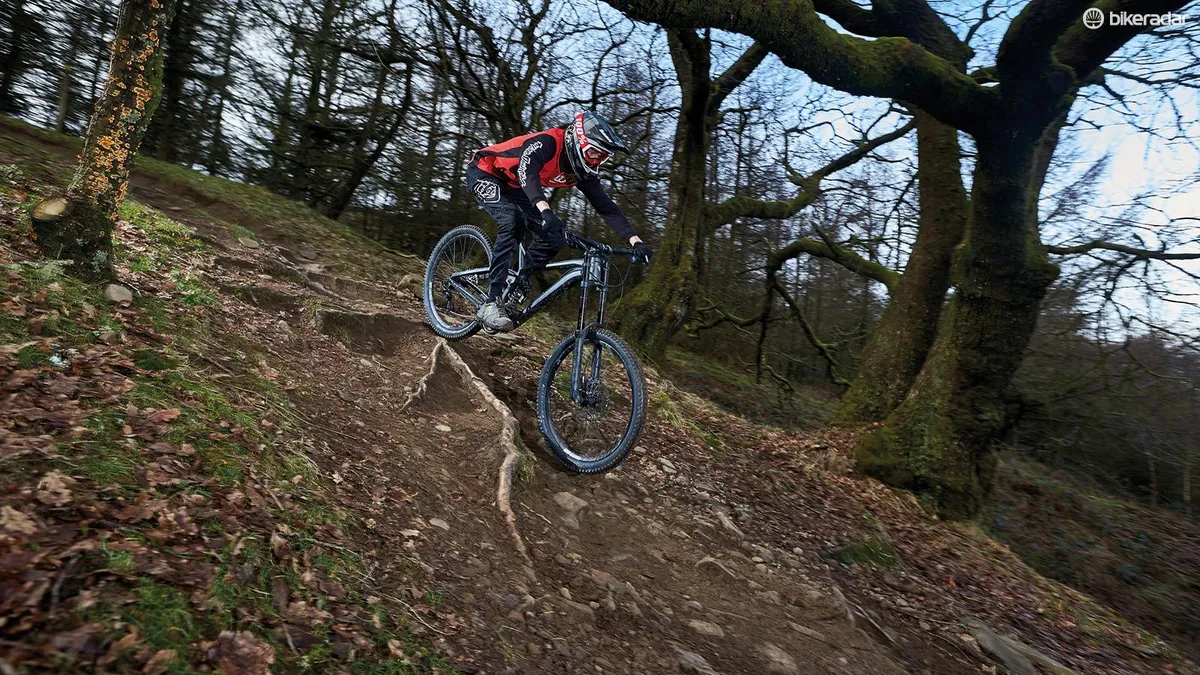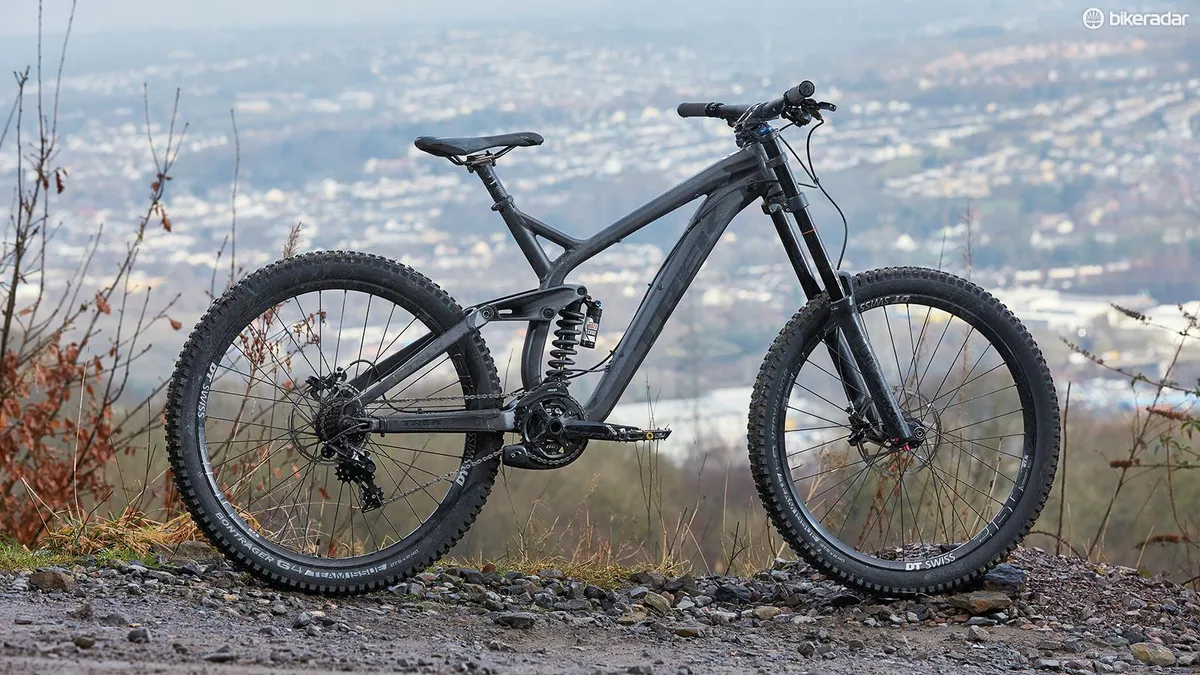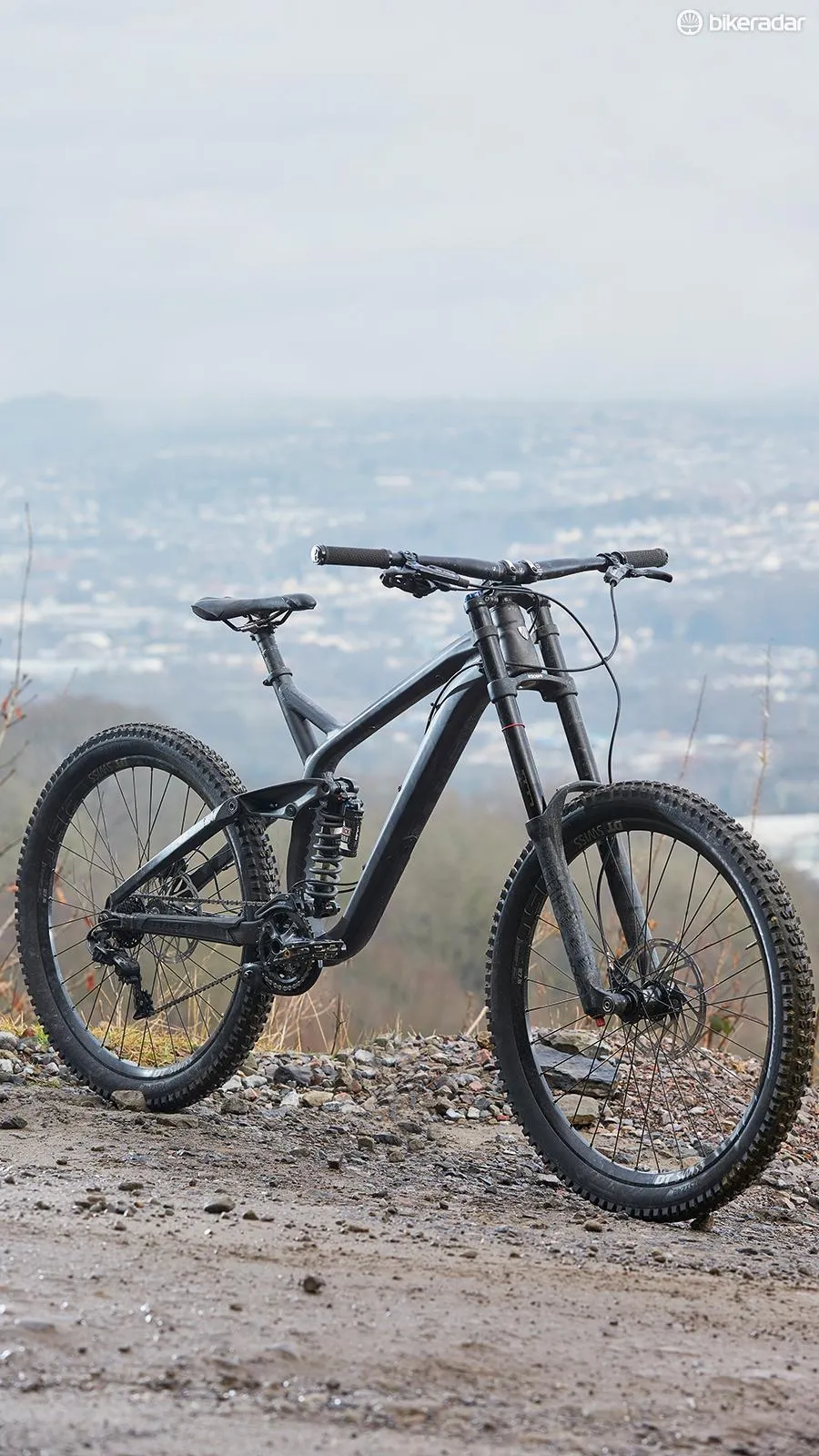While Trek's top-end Sessions had a complete redesign for 2018, this budget model uses a frame carried over from previous years. It’s a design that’s enjoyed huge success on the World Cup circuit, but how has it stood the test of time?
Editor's note: This bike has now been superseded by the 2019 model which was not available for review at the time of this test
Trek Session 8 27.5 frame
Trek’s ABP (Active Braking Pivot) suspension system is essentially a single-pivot with linkage-driven shock design, except it uses a rear-axle pivot to reduce the effect of braking on the suspension action.
The shock is compressed between the upper rocker link and the forward tips of the chainstays. Trek calls this set-up ‘Full Floater’ and uses it to tweak the leverage curve so that the Session provides 210mm of slightly progressive travel.
A ‘Mino Link’ chip allows the bottom-bracket height to be adjusted by 10mm and the head angle by half a degree.
Trek Session 8 27.5 kit
To be blunt, you don’t get all that much for your money.
The Session 8 has solid DT Swiss wheels, Bontrager tyres and SRAM drivetrain parts, but its BoXXer RC coil fork houses RockShox’s more basic Motion Control damper. The SRAM Guide R brakes were also disappointing, lacking in power and developing a spongy feel after a few muddy rides.
Trek Session 8 27.5 ride
The Session felt small and cramped. In fact, I found myself double-checking that Trek had sent the XL frame I’d requested.
Not only is the reach noticeably short, but the minimal-rise bar (15mm) sits low on the negative-rise stem. With a high-ish bottom bracket, the bar feels even lower when riding. At 6ft 3in, I was practically rubbing my knees on the bar when I leaned forward to pedal. Plus things felt precarious in steep or technical sections.
I ended up swapping out the bar for something taller and with less backsweep, as well as putting a 5mm spacer under the stem. Even then, the high bottom bracket and short front centre meant the ride was far less stable or confidence-inspiring when things got fast or technical.
The Trek’s higher centre of gravity makes pushing hard into turns feel like more of a gamble too, despite the impressive grip of the high-volume Bontrager G4 tyres.

Up front, the Motion Control fork also puts the Session at a distinct disadvantage. It’s noticeably harsh on high-speed hits in particular, where it spikes badly. The damping just can’t react in time to keep up with square-edged bumps and the result is a clunky feeling through the bar.
In contrast, the rear suspension is very supple. The RockShox Vivid R2C shock is fancy for this price point, but doesn’t offer any big advantage over the simpler coil shocks found on other bikes.
Because of the short and tall frame, I had to run the rebound damping (particularly the high-speed rebound) pretty slow to provide enough stability over jumps and G-outs, and this compromised sensitivity a little. I also swapped the stock 500lb/in spring for a 550lb/in replacement to make the bike feel more balanced.
Trek Session 8 27.5 verdict
The outdated geometry, harsh fork and underwhelming brakes meant I really struggled to get on with the Trek.
Smaller riders can go some way to addressing the first complaint by going up a size, to get a longer reach (if the seat tube isn’t too long), but the high bottom bracket still undermines the handling somewhat. Considering all this (as well as the price), it's a hard bike to recommend.


